
A tongue piercing is a body piercing usually done directly through the center of the tongue. Since its decline in popularity around 2011, it has seen a recent upsurge making it now the second most popular piercing amongst young women aged 18-25 in 2019. It remains unpopular amongst men. Midline tongue piercings, or one hole through the center of the tongue is the most common way to have the tongue pierced.

The Infinity Gauntlet is an American comic book storyline published by Marvel Comics. In addition to an eponymous, six-issue limited series written by Jim Starlin and pencilled by George Pérez and Ron Lim, crossover chapters appeared in related comic books. Since its initial serialization from July to December 1991, the series has been reprinted in various formats and editions.

A triangle piercing is one of several forms of genital piercing applied to the vulva. It is a horizontal piercing that passes from side to side, beneath the base of the clitoral hood tissue where it meets the inner labia and under the clitoris. The name is derived from the tissue where the labia meets the clitoral hood, which looks like a triangle when pinched.
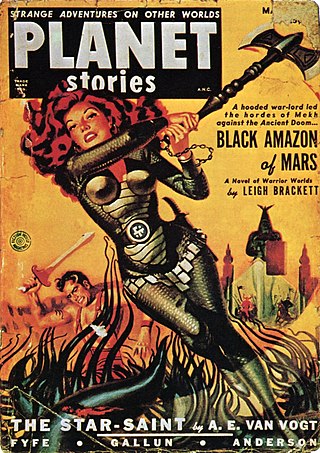
Planet Stories was an American pulp science fiction magazine, published by Fiction House between 1939 and 1955. It featured interplanetary adventures, both in space and on some other planets, and was initially focused on a young readership. Malcolm Reiss was editor or editor-in-chief for all of its 71 issues. Planet Stories was launched at the same time as Planet Comics, the success of which probably helped to fund the early issues of Planet Stories. Planet Stories did not pay well enough to regularly attract the leading science fiction writers of the day, but occasionally obtained work from well-known authors, including Isaac Asimov and Clifford D. Simak. In 1952 Planet Stories published Philip K. Dick's first sale, and printed four more of his stories over the next three years.
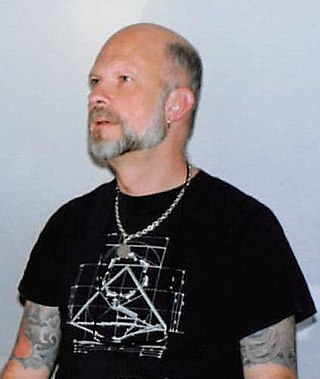
James Mark Ward is an American body piercer. In a 2004 documentary, entitled The Social History of Piercing, MTV called him "the granddaddy of the modern body piercing movement."
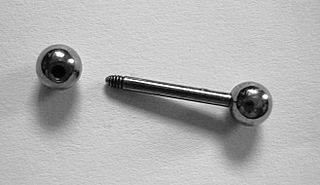
Barbell style piercing jewelry is composed of a straight bar with a bead on each end, one or both beads unscrewable for removal and/or changing of the beads. Often one of the beads is fixed, either via epoxy or welding, so that only one bead is used to install or remove the jewelry. Barbell threads are usually right-handed.
The Gauntlet, also known as Gauntlet Enterprises, was a body piercing business founded by Jim Ward that is considered the first business of its type in the United States and was the beginning of the body piercing industry.

Elayne Angel is an American professional body piercer.
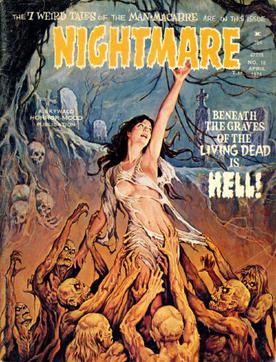
Skywald Publications was an American publisher of black-and-white comics magazines, primarily the horror anthologies Nightmare, Psycho, and Scream. It also published a small line of comic books and other genre magazines. Skywald's original comics were similar in appearance and quality to rival black-and-white publisher Warren Publishing, and even employed many of the same creators. Skwyald operated from 1970 to 1975.

Richard Simonton (1915–1979), also known under the pseudonym Doug Malloy, was a Hollywood businessman and entrepreneur, known for his involvement in the Hollywood community, his rescue of the steamboat Delta Queen, his work in preserving the work of musicians in the Welte-Mignon piano rolls and for founding the American Theatre Organ Society. Among piercing enthusiasts he is also known as an early pioneer of the contemporary resurgence in body piercing.

Pep Comics is the name of an American comic book anthology series published by the Archie Comics predecessor MLJ Magazines Inc. during the 1930s and 1940s period known as the Golden Age of Comic Books. The title continued under the Archie Comics imprint for a total of 411 issues until March 1987.

Modern Primitives, written by V. Vale and Andrea Juno, is a RE/Search publications book about body modification, published in 1989. The book consists of a collection of twenty two interviews and two essays with individuals and key figures involved the field of body modification in the late 1980s. It was one of the first documents to attempt to comprehensively cover the re-emergence and increasing popularity of tattooing, piercing, scarification, corsetry, sideshow, ritual and other practices in contemporary western society.

Kalle Anka & C:o is a Swedish weekly Disney comics magazine, published by Egmont. The 52-page comic, launched in September 1948, is the overall best-selling Swedish comic magazine. In the early years, the comic printed translated stories from the United States, including Walt Disney's Comics and Stories, Four Color and other Dell Comics Disney titles. As Disney comics production waned in the United States in the 1960s, Kalle Anka began printing more European-produced content, from Scandinavia and Italy. Now, Kalle Anka & C:o and its Scandinavian sister editions Anders And & Co. (Denmark) and Donald Duck & Co (Norway) are identical, apart from the language.
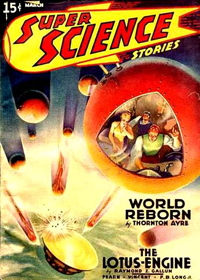
Super Science Stories was an American pulp science fiction magazine published by Popular Publications from 1940 to 1943, and again from 1949 to 1951. Popular launched it under their Fictioneers imprint, which they used for magazines, paying writers less than one cent per word. Frederik Pohl was hired in late 1939, at 19 years old, to edit the magazine; he also edited Astonishing Stories, a companion science fiction publication. Pohl left in mid-1941 and Super Science Stories was given to Alden H. Norton to edit; a few months later Norton rehired Pohl as an assistant. Popular gave Pohl a very low budget, so most manuscripts submitted to Super Science Stories had already been rejected by the higher-paying magazines. This made it difficult to acquire good fiction, but Pohl was able to acquire stories for the early issues from the Futurians, a group of young science fiction fans and aspiring writers.
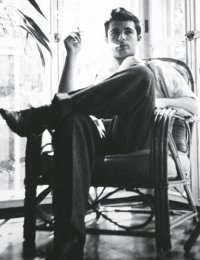
William Hess Ward, was an American cartoonist notable as a good girl artist and creator of the risqué comics character Torchy.
Russ Cochran was a publisher of EC Comics reprints, Disney comics, and books on Hopalong Cassidy, Chet Atkins, Les Paul, and vacuum tubes. He was a publisher for over 30 years, after quitting his job as a physics professor.
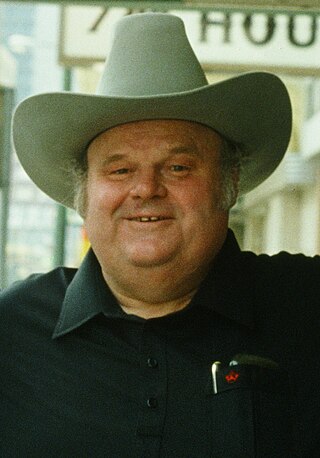
Horst Streckenbach “Tattoo Samy” was a well-known German tattoo artist and historian of the medium, who had been tattooing since 1946. Streckenbach is considered important in the development of tattooing in Germany. With Manfred Kohrs from Hanover in Germany from 1974 to 1978 he developed a rotary tattoo machine and in 1975 the barbell.
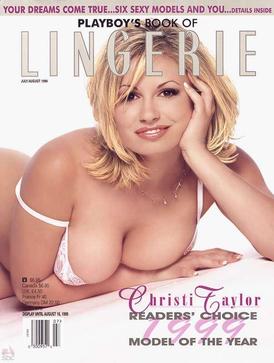
Playboy Special Editions are a spin-off series of Playboy magazine containing glamour and softcore nude photographs. The initially infrequent and later semi-regular editions ran from 1963 through 2000 then re-branded from 2000 through 2012 final issues. A one-off special edition was published in February 2015 featuring images of models in different locations within California from the controversial photographer Terry Richardson.

Mickey Mouse Magazine is an American Disney comics publication that preceded the popular 1940 anthology comic book Walt Disney's Comics and Stories. There were three versions of the title – two promotional giveaway magazines published from 1933 to 1935, and a newsstand magazine published from 1935 to 1940. The publication gradually evolved from a 16-page booklet of illustrated text stories and single-page comic panels into a 64-page comic book featuring reprints of the Mickey Mouse and Donald Duck comic strips.


















